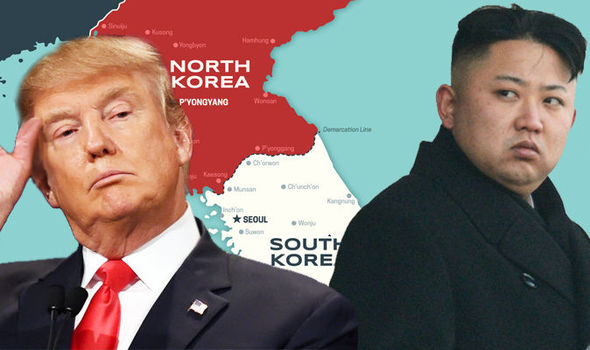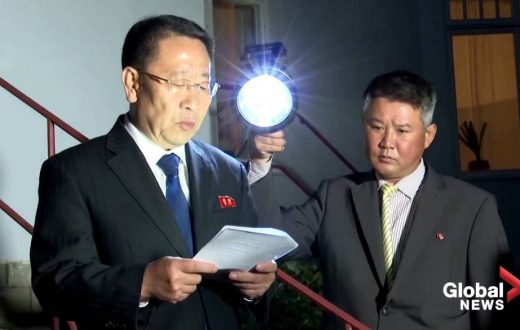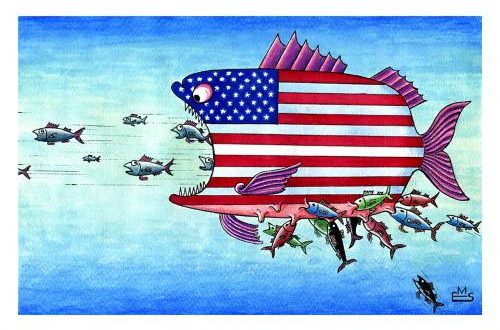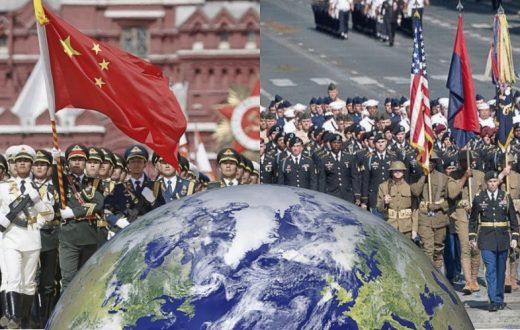To understand that Donald Trump’s diplomacy is a threat to the rest of the international community, it is important to look back in the history of North Korea.
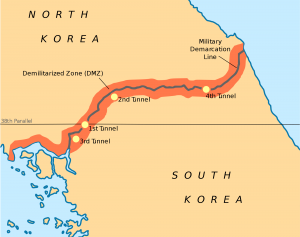
Since the end of the Second World War, North Korea has had a great deal of tension with South Korea, which was supported by the United States and resulted in a war in 1950. In 1953, the UN, China and North Korea signed an armistice agreement, which included a demilitarized zone between the two Koreas. In January 1992, the North Korean leader sent his secretary to UN headquarters in New York for a secret meeting with an American delegate. The North Korean ambassador called for the withdrawal of U.S. troops from the south, and in return, he wanted the United States to guarantee that it would not jeopardize the existence of its country. George Bush, then President of the United States, responded to the offer by silence, which was interpreted as a desire to remove North Korea from the map, and military nuclear policy was launched by North Korea for this reason. So it was the American threats that probably prompted North Korea to acquire nuclear weapons, and which even today is blocking the process of unification of the two Koreas.
Between 1996 and 2011, North Korea demonstrated its diplomatic instability. Alternating between armed threats and resumption of international relations, this country has proven that it is not possible to rely blindly on its diplomatic strategies without taking a significant historical step back.
In 1996, North Korea announced that it was no longer bound by the Armistice Treaty and sent troops to the demilitarized zone. But in 2000, relations with the international community seemed to be resuming. The US Secretary of State was notably received in North Korea, hoping to convince that country to stop exporting missiles. But in 2003, the country withdrew from the Non-Proliferation Treaty. North Korea threatens to declare itself a nuclear power if the United States does not provide guarantees of non-aggression. A meeting between Korea, the United States, China, Japan and Russia on the denuclearization of North Korea was held. In 2005, North Korea claimed to own the atomic bomb and announced in February that it would suspend its participation in multilateral negotiations. In September, it finally committed itself to abandon nuclear weapons and accede to the Non-Proliferation Treaty. In 2006, seven missile launch tests were conducted in the Sea of Japan. North Korea has announced the success of an underground nuclear test to strengthen its self-defence against US hostility. But in 2007, deadly floods occurred, and emergency assistance was provided by South Korea at North Korea’s request. This allowed a second inter-Korean summit to take place, leading to the signing of a peace treaty. North Korea has agreed to dismantle its three main nuclear facilities. But in 2009, a new underground nuclear test took place, and the following year, North Korean soldiers fired on South Korea.

Today, since Kim Jong-Un’s official arrival in 2011 as Supreme Leader, the threat has become stronger than ever.
Missiles were sent in 2013. Then the leader announced that he was ready for talks with South Korea. In 2016, a hydrogen bomb test was successfully completed, an intermediate and long-range missile was launched, and a nuclear test was conducted. In 2017, North Korea denounced the sending of a US naval aviation group on its territory and declared that it was ready for war. Numerous ballistic shots were fired, including an underground hydrogen bomb test. Finally, the government proclaimed itself a “fully-fledged nuclear state” after testing a new type of missile capable of hitting the United States. Earlier this year, however, the country showed an apparent willingness to relax its relations with the international community : talks with the United States were launched in order to “make peace” according to Trump, not to mention the inter-Korean summits.
Donald Trump now believes he has the right strategy to stop North Korean escalation. Its diplomatic tactics are limited to two points: the threat first, the resistance second.
- The threat by its words, while North Korea fears the strength of the United States, and is arming itself to be able to face it.
- Resistance through its actions, by refusing to take a step until the country has begun the denuclearization of the peninsula.
North Korea acts like a child who gets scared and withdraws. The United States should be the adults acting with hindsight and diplomacy to try to resolve this historically entrenched situation. On the other hand, Donald Trump played on the escalation of violence, threatening to destroy the country, and now refuses to step back by taking the first step. As long as it remains on its positions, the possibility that the situation will worsen cannot be ruled out.

